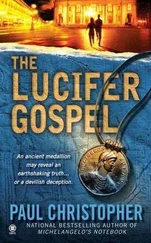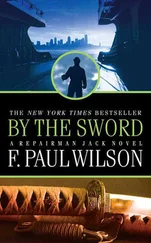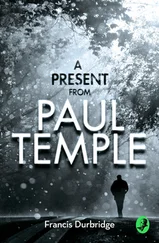Paul Christopher - The Sword of the Templars
Здесь есть возможность читать онлайн «Paul Christopher - The Sword of the Templars» весь текст электронной книги совершенно бесплатно (целиком полную версию без сокращений). В некоторых случаях можно слушать аудио, скачать через торрент в формате fb2 и присутствует краткое содержание. Жанр: Триллер, на английском языке. Описание произведения, (предисловие) а так же отзывы посетителей доступны на портале библиотеки ЛибКат.
- Название:The Sword of the Templars
- Автор:
- Жанр:
- Год:неизвестен
- ISBN:нет данных
- Рейтинг книги:3 / 5. Голосов: 1
-
Избранное:Добавить в избранное
- Отзывы:
-
Ваша оценка:
- 60
- 1
- 2
- 3
- 4
- 5
The Sword of the Templars: краткое содержание, описание и аннотация
Предлагаем к чтению аннотацию, описание, краткое содержание или предисловие (зависит от того, что написал сам автор книги «The Sword of the Templars»). Если вы не нашли необходимую информацию о книге — напишите в комментариях, мы постараемся отыскать её.
The Sword of the Templars — читать онлайн бесплатно полную книгу (весь текст) целиком
Ниже представлен текст книги, разбитый по страницам. Система сохранения места последней прочитанной страницы, позволяет с удобством читать онлайн бесплатно книгу «The Sword of the Templars», без необходимости каждый раз заново искать на чём Вы остановились. Поставьте закладку, и сможете в любой момент перейти на страницу, на которой закончили чтение.
Интервал:
Закладка:
“It’s a papal bull. A proclamation. A license, like letters patent they used to give to privateers and pirates.”
“I could never figure out why they called it a bull,” said Peggy. “What do bulls have to do with it?”
“A bulla is the lead seal they used to attach to the end of them,” explained Raffi.
“What about this ‘rocky holy cave-place of peace and quiet’?” Holliday asked. “Ring any bells?”
“Not a one,” said Wanounou. “But I know who you could ask.”
“Who?”
“A friend of mine, Maurice Bernheim. He’s a curator at the Musйe National de la Marine in Paris. He wrote a book on the history of Mediterranean shipping. If anyone is going to know about this Roger de Flor, it’ll be Maurice.”
25
The Musйe National de la Marine is located in one wing of the 1930s Palais de Chaillot and looks out across the Champ de Mars. When you see a photograph of Hitler with the Eiffel Tower in the background during his whirlwind visit to Paris after the city fell, the Fьhrer is standing on the terrace of the Marine Museum.
Maurice Bernheim was in his early forties, bluff and hearty and full of laughter. When he saw Holliday his first comment was about how easily a man with a patch on his eye could be a pirate. Bernheim was comfortably chubby, brown-haired, wore a lovely Pierre Cardin suit and expensive-looking shoes, and smoked a particularly foul-smelling brand of cigarettes known as Boyards. Holliday hadn’t known you could still get them, and the only reason he remembered them at all, other than once choking on one, was because, oddly, they were the only brand of cigarette anyone smoked in the movie Blade Runner. They smelled like old sneakers that had somehow caught fire.
Bernheim’s office was a lavish room with the same view that Hitler had gotten, French doors leading out to the same terrace, paintings of ships where there were no bookcases, and ships in bottles on the few shelves that had no books. The furniture was expensive, leather and comfortable. Bernheim’s desk was huge, carved, and very old. The carpets on the floor were Isfahan Persian and beautiful. Either Bernheim was independently wealthy or he had a lot of juice in his job.
“Ah, yes,” said Bernheim, leaning back in his chair. Smoke writhed up from the corn-paper cigarette in the big, cut-glass ashtray, already overflowing with butts from previous brushfires. “The infamous Roger de Flor. I know him well.”
“Why infamous?” Holliday asked.
“He was something of a bad boy, you know. An adventurer and a mercenary. Sometimes he would rise up against his employers and take them over. He was like his Templar friends-far too successful. A great sailor by all accounts.”
“Why did the scroll we found refer to him as Rutger von Blum?” Peggy asked.
“That was his name,” said Bernheim with a very Gallic shrug. He picked up his cigarette, and it found its way to the corner of his mouth. He sucked, then puffed, excreting a cloud of smoke up toward his high ceiling. “He was born in Italy where his father was royal falconer in Brindisi. Blum means flower in German. De Flor was nothing more than political expediency… When in Rome and all that, yes?”
“How did he connect with the Templars?” Holliday asked.
“He was a second son, which in those days meant his father didn’t know what to do with him. It was either the priesthood or the sea. When the young Roger came of age he was indentured to a Templar galley of which he later became captain. Like that.” He took a puff of his Boyard. “He eventually built up a fleet of warships and cargo ships for hire. His flagship was the Wanderfalke-the Peregrine Falcon, a caravel. Two hundred tons; quite large for the time.”
“I read you the translation of the Latin over the telephone,” said Holliday. “Did it mean anything to you?”
Bernheim smiled broadly and took another drag on his cigarette.
“Not at first. My Latin is sparse to say the least; it was never my subject even years ago. I think perhaps your translation was a little… rough, as well.”
“I’ll grant you that.” Holliday nodded.
“So,” continued Bernheim, “it did not sonner les cloches, yes? Ring the bells?” He shrugged again. “So I thought, I smoked a few cigarettes and thought some more. Fanum cavernam petrosus quies. So I did what my old teacher Monsieur Forain instructed. I, how do you say it, decomposer la phrase?”
“Parse,” said Holliday.
“Yes, parse,” nodded Bernheim. “I parsed the phrase. Fanum. Shrine. Holy Place. Cavernam. Cave. Hollow place. Petrosus. Rock. Stone. Quies. Resting place.”
“Bells rang?” Peggy asked.
“Indeed, yes, they rang loudly because I also remember Monsieur Forain telling us that Latin is often a matter of the turn of phrase. What are the phrases that we have here?”
“Fanum cavernam and petrosus quies,” responded Holliday.
“Quite so, les phrases descriptives, the descriptive phrases ‘holy cave’ and ‘rock of quiet.’ Then I see it. A pun, or perhaps even a code. Quies, a place of safety. A harbor perhaps. The Harbor of the Rock, yes?”
“Is there such a place?” Peggy asked.
“Certainly,” nodded Bernheim, triumphantly crushing out the fuming end of his cigarette. “Roger de Flor’s home port: La Rochelle, the harbor of the rock.”
“And the holy cave?” Holliday said.
“Saint-Emilion,” said Bernheim.
“I thought that was a wine,” said Peggy.
“Also a town not far from La Rochelle. Also a monolithic church carved out of the limestone where the hermit St. Emilion had his home. In a cave beneath the church. The Harbor of the Rock. The Holy Cave, n’estce pas?”
“It could be,” nodded Holliday.
“I am sure of it,” said Bernheim. “Go to see this person in La Rochelle.” He sat forward and scribbled something on a notepad. He tore it off the pad and handed it to Holliday. A name and address: Dr. Valerie Duroc, Universitй de La Rochelle, 23 avenue Albert Einstein, La Rochelle, France. “She will be your guide.”
They left the museum and crossed the Seine on the Pont d’Iйna by the tour boat landing stage. They turned and walked along the quayside, enjoying being in Paris once again. Peggy had been there on assignment several times, and when Holliday had done a brief stint at NATO headquarters in Belgium, Paris had been his favorite go-to place for R amp;R.
Paris. Arrogant, self-involved, pompous to the point of buffoonery, and populated by roughly six million elitist snobs forever looking down their noses at everyone else in the world, including the rest of their fellow Frenchmen, Paris was without a doubt still the most beautiful city in the world and one of the most fascinating. You could hate Paris for all its shortcomings, but at the same time you could have a wonderful time meeting the challenges the old bitch has got waiting for you around every corner.
They eventually reached the Quai d’Orsay and turned down the boulevard Saint-Germain, heading toward their hotel. Saint-Germain was in full summertime riot gear, selling everything from Armani suits to ten-thousand-dollar cufflinks and solving the problems of the world over coffee and a sandwich jambon in any number of cafйs that ran the length of the long, tree-lined grand boulevard.
Half the store windows announced a grande vente to lure in the tourists, and the other half had signs in their windows warning of the dreaded fermeture annuelle, the city’s classic July-August vacation when all Parisians make their once-yearly trek to the country or the seaside and pretend to enjoy it.
As Holliday and Peggy made their way down the street to their pension-hotel on the rue Latran they heard a dozen different languages being spoken and saw tour buses rolling by from at least that many countries. It was hardly the Left Bank of Hemingway’s time, but it was still a great show, complete with striped jerseys, berets, old Citroлns, and les flics, the smiling pillbox-hatted policemen twirling their nightsticks and caressing the nasty little automatic pistols holstered on their hips. Here and there Bosnian beggars lurked, often with landmine-blasted arms and legs, rattling paper cups in hand.
Читать дальшеИнтервал:
Закладка:
Похожие книги на «The Sword of the Templars»
Представляем Вашему вниманию похожие книги на «The Sword of the Templars» списком для выбора. Мы отобрали схожую по названию и смыслу литературу в надежде предоставить читателям больше вариантов отыскать новые, интересные, ещё непрочитанные произведения.
Обсуждение, отзывы о книге «The Sword of the Templars» и просто собственные мнения читателей. Оставьте ваши комментарии, напишите, что Вы думаете о произведении, его смысле или главных героях. Укажите что конкретно понравилось, а что нет, и почему Вы так считаете.











